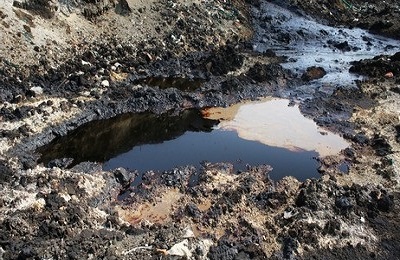Soil inorganic pollutants come mainly from industrial effluents and solid wastes that enter the soil. Nitrates, sulfate chlorides, and soluble carbonates are common and abundant inorganic pollutants. These inorganic pollutants can cause soil slumping, change soil structure, lead to soil salinization and affect water quality, among other hazards.

For heavy metal detection in soil, Lifeasible is currently using AAS (atomic absorption spectrometry), AFS (atomic fluorescence spectroscopy), ICP-QMS (inductively coupled plasma quadrupole mass spectrometry), ICP-MS (inductively coupled plasma mass spectrometry), HR-ICP-MS (high resolution inductively coupled plasma mass spectrometry), ICP-OES (inductively coupled plasma optical emission spectrometry), XRF (X-ray fluorescence), Terahertz spectroscopy and other technical methods for morphological analysis and content detection of elements, including sulfur dioxide, nitrogen dioxide, ammonia nitrogen, nitrogen oxides, ozone, fluoride, cyanide, ammonia, hydrogen chloride, sulfate, alkyl mercury, metal elements and pH, moisture, water content, dry matter, conductivity, cation exchange, total phosphorus, organic carbon, total salinity, organic matter, exchange acidity, etc.
The microwave digestion method has the advantages of easy operation, fewer reagents, less contamination, reduced interference, and improved accuracy compared to traditional digestion methods.
Lifeasible uses the microwave heating ablation method to pretreat contaminated soil samples and subsequently determines different inorganic contaminant elements in soil using flame atomic absorption spectrometry, graphite furnace atomic absorption spectrometry, hydride generation an atomic fluorescence spectrometry, etc.
Terahertz spectroscopy is a novel and feasible method for the detection of soil contaminants that can be qualitatively and quantitatively analyzed and has great potential for development. Lifeasible can detect the presence and content of inorganic contaminants in soil using terahertz spectroscopy, which allows real-time sampling to observe the remaining number of inorganic contaminants in the treated soil as a way to assess the current extent and effectiveness of remediation of contaminated soil.
We use terahertz spectroscopy to detect soil inorganic contaminants in five basic steps, namely grinding, sieving, pressing, time-domain signal acquisition, and data algorithm processing to obtain the spectral signal.
ICP-MS analysis is a fast and accurate multi-element analysis technique, which is an important tool in Lifeasible's analytical testing. It consists of an ion source, sample entry system, three-stage interface cone assembly, vacuum system, mass analyzer, mass spectrometer detector, and data processing system. Compared with other analytical techniques, it has relatively simple sample preparation, fast analysis speed, good precision and can analyze most inorganic contaminants in soil simultaneously.
The HR-ICP-MS method is one of the powerful tools for inorganic multi-element analysis of soils by Lifeasible. Compared with the traditional ICP-QMS, HR-ICP-MS has the advantages of higher sensitivity, wider linear response range, resistance to polyatomic ion mass spectrometry, and low background equivalent concentration. We can directly determine nearly 100 inorganic contaminants in the samples by HR-ICP-MS after the sample is treated with closed acid digestion.
Lifeasible uses a variety of new, viable, qualitative, and quantitative soil inorganic contaminant detection methods that have great potential for development to serve the needs of our customers. Please feel free to contact our staff with any of your needs.
Lifeasible has established a one-stop service platform for plants. In addition to obtaining customized solutions for plant genetic engineering, customers can also conduct follow-up analysis and research on plants through our analysis platform. The analytical services we provide include but are not limited to the following:
Get Latest Lifeasible News and Updates Directly to Your Inbox
Mechanisms Regulating Plant Chloroplast Biogenesis
April 15, 2025